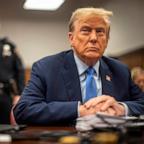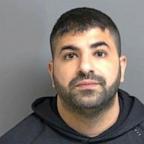Fed Vacancies Challenge Bush
W A S H I N G T O N, Feb. 14 -- Wanted: Republican economists or bankers, with decades of high-level experience, willing to take a huge pay cut and move to the nation's capital to work inthe shadow of the world's most revered central banker.
From the day he took office, president Bush had three decisions to make regarding the seven-member Federal Reserve Board of Governors. This is the largest number of Fed appointments at the start of any presidential term and giveshim a chance to make a big mark on the powerful central bank.
There are two vacant governors' chairs and Bush must also rule on whether to renominate Fed Vice Chairman Roger Ferguson, for whose reappointment Chairman Alan Greenspan is said to be lobbying.
Many economists believe Bush will fill the two vacant governor slots with candidates who will advocate lower interest rates and taxes in the Fed's marbled hallways.
"He has an awful lot of power now via these appointments," Wingspanbank.com chief economist Jim Annable said.
The Fed's Role
By controlling interest rates in the U.S. economy, the Fed affects the wealth and spending decisions of every American. That makes the Fed a tempting target for political influence.
And as fiscal policy and monetary policy become intertwined as proposed ways to keep the record U.S. economic expansion going, having pro-tax cut, anti-rate increase Republicans on the Fed ship will help Bush push his policies.
"They're going to find people for the Fed that lean the same way," Economy.com chief economist Mark Zandi said.
However, Zandi and other economists noted that Bush should be careful not to appear to threaten the Fed's independence, which Chairman Alan Greenspan has clung to tightly during his 13-year tenure. If Greenspan felt Bush was going too far in stacking the deck toward lower interest rates, he could air his grievances during his weekly breakfast meetings with his old friend, Treasury Secretary Paul O'Neill.
It Wasn't Meant to Happen
When the Fed was founded by Congress in 1913, lawmakers sought to develop a system in which one president would not hold too much sway over the central bank.




